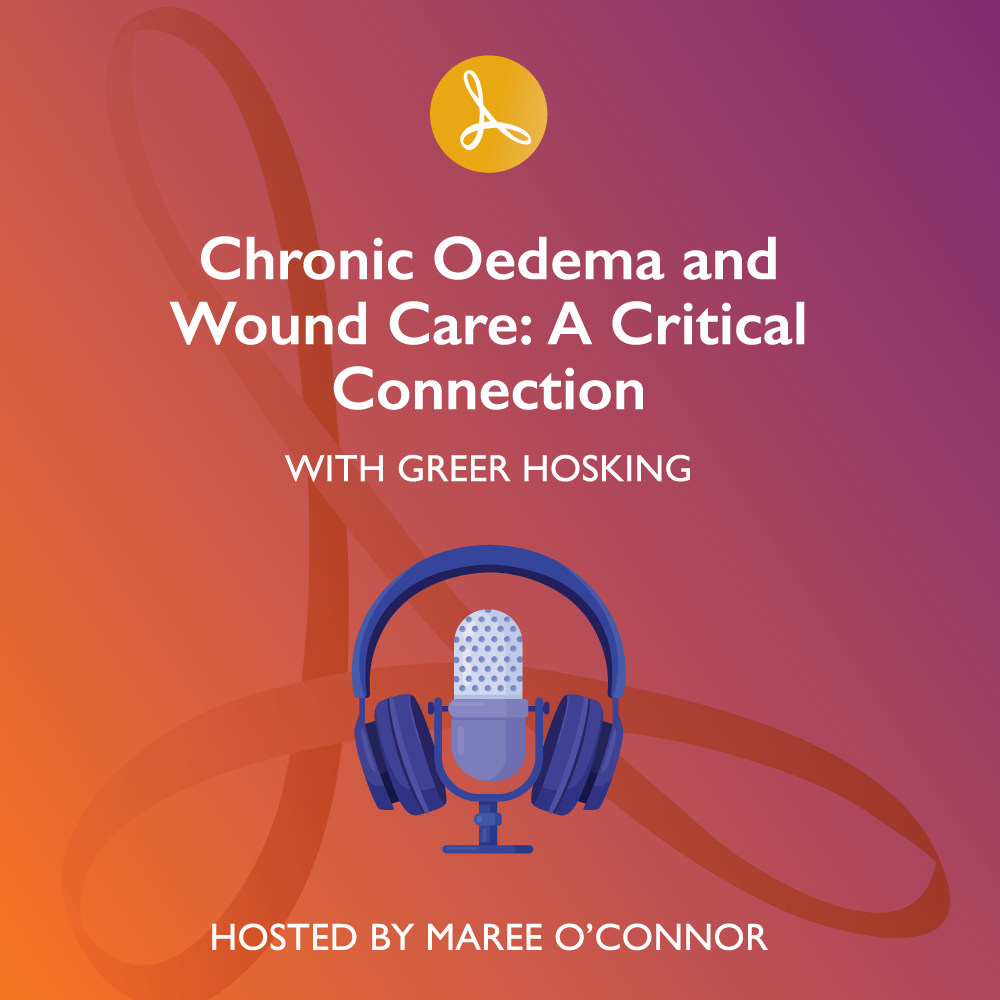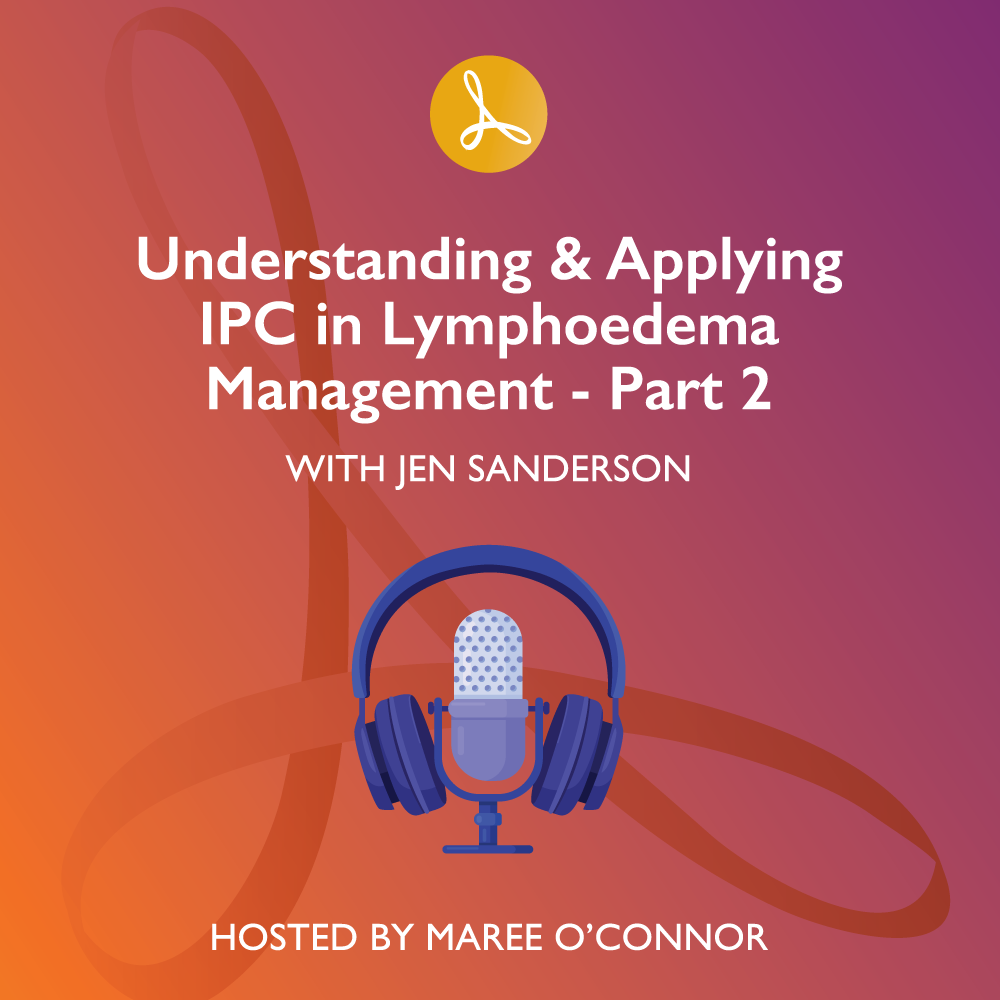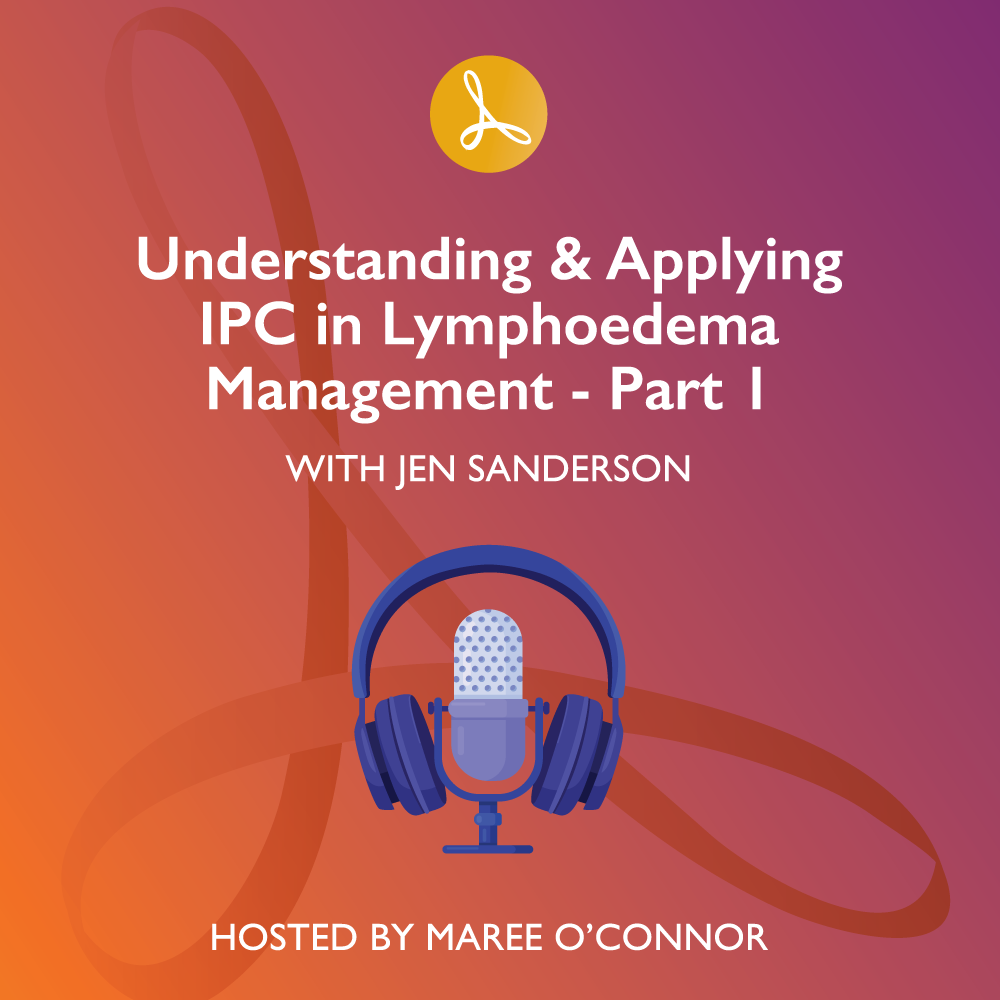Chronic Oedema and Wound Care: A Critical Connection

In this Lymphoedema Insights episode, Maree O’Connor speaks with Wound CNC Greer Hosking about the connection between oedema and wound care.
🎧 Listen to Episode 3
About our guest speaker: Greer Hosking
Greer Hosking is a Registered Nurse and accredited Lymphoedema Therapist specialising in upper and lower limb lymphoedema. She is the inpatient Wound Clinical Nurse Consultant at Austin Health, working across all three campuses as part of a multidisciplinary team managing wounds from minor to complex, including palliative wounds. Greer recently introduced sequential intermittent compression pumps for inpatients with lymphoedema and chronic oedema, and supports staff through the Wound Resources Nurse (WReN) program by providing education and guidance on effective wound care and product use. She has also designed and delivered wound care education through online modules, seminars, and published works, and has presented at national and international conferences.
This episode addresses several key questions, including:
Why is addressing chronic oedema essential in wound care?
The episode explores how chronic oedema impacts wound healing and why it must be managed to prevent recurrence and promote effective healing.
–
What motivated Greer Hosking to pursue further education in chronic oedema management, and how has it changed her practice?
Greer shares her journey, including the challenges she faced in managing leg ulcers and lymphoedema, and how additional training transformed her approach to patient care.
–
How can health professionals integrate oedema awareness into their clinical assessments and treatment plans?
Practical tips, such as performing pitting oedema tests and assessing arterial circulation, are discussed to help clinicians identify and address oedema effectively.
–
What are the best practices for using compression therapy in managing chronic oedema?
The episode highlights the importance of individualized compression therapy, the shift away from traditional multi-layer short-stretch bandages, and the role of two-layer cohesive systems and compression pumps.
–
How can wound care nurses ensure long-term management of oedema to prevent wound recurrence?
Strategies for planning discharge, selecting appropriate compression garments, and collaborating with community services are discussed to ensure sustainable care.
–
What role does patient-centered care play in managing chronic oedema?
The importance of tailoring treatment to each patient’s needs, abilities, and preferences is emphasized, along with the need for ongoing education and communication.
–
These questions guide the episode’s exploration of the intersection between chronic oedema and wound care, offering valuable insights for health professionals.
Recommendations for clinical practice mentioned in the discussion
Oedema Assessment:
- Perform simple tests like the pitting test (oedema test) on areas such as the ankle or tibia to identify oedema, even in patients without obvious swelling.
- Assess arterial circulation using toe or ankle pressure tests to ensure compression therapy is safe.
Personalised Compression Therapy:
- Select the most appropriate type of compression for each patient, considering factors such as their ability to put on and remove garments, mobility level, and home environment.
- Use two-layer cohesive compression systems instead of multi-layer short-stretch bandages, as they are more comfortable, effective, and less likely to cause skin damage.
Education and Training:
- Promote training in oedema and lymphoedema management among healthcare professionals, as these areas are often not included in undergraduate programs.
- Encourage participation in specialised courses, such as Level 1 lymphoedema training, to gain advanced knowledge.
Patient-Centered Care:
- Involve patients in decision-making about their treatment, considering their preferences and physical limitations.
- Adapt compression options to individual needs, such as using nighttime garments for elderly patients or those with limited mobility.
Discharge Planning:
- Develop long-term management plans for patients, ensuring they have access to community services and appropriate follow-up care after hospital discharge.
- Refer patients to specialized services when necessary, providing clear recommendations on the type of compression they need.
Management of Lymphorrhea:
- Address lymphorrhea (leaky legs) before initiating long-term compression therapy, as compression will not be effective while this condition persists.
Advocacy for Systemic Change:
- Advocate for the inclusion of wound care and oedema management training in undergraduate education programs.
- Improve collaboration between hospitals and community services to ensure continuous and effective care.
These recommendations aim to enhance the effectiveness of wound and chronic oedema treatment, reduce hospital readmission rates, and ensure patient-centered care.
Subscribe now to stay updated as new episodes are released.
Catch up
🎧 Listen to Episode 1 and 2 – now available on Spotify and Apple Podcasts
Sponsorship:
This episode of Lymphoedema Insights is proudly supported by Solventum, a global healthcare company dedicated to advancing solutions for wound care and chronic oedema management. With a focus on innovation and collaboration, Solventum partners with clinicians to deliver evidence-based products and education that support improved patient outcomes.
You can find more information at solventum.com

Note: Sponsorship does not imply endorsement, and all educational content is developed independently to ensure it remains evidence-based and unbiased.






